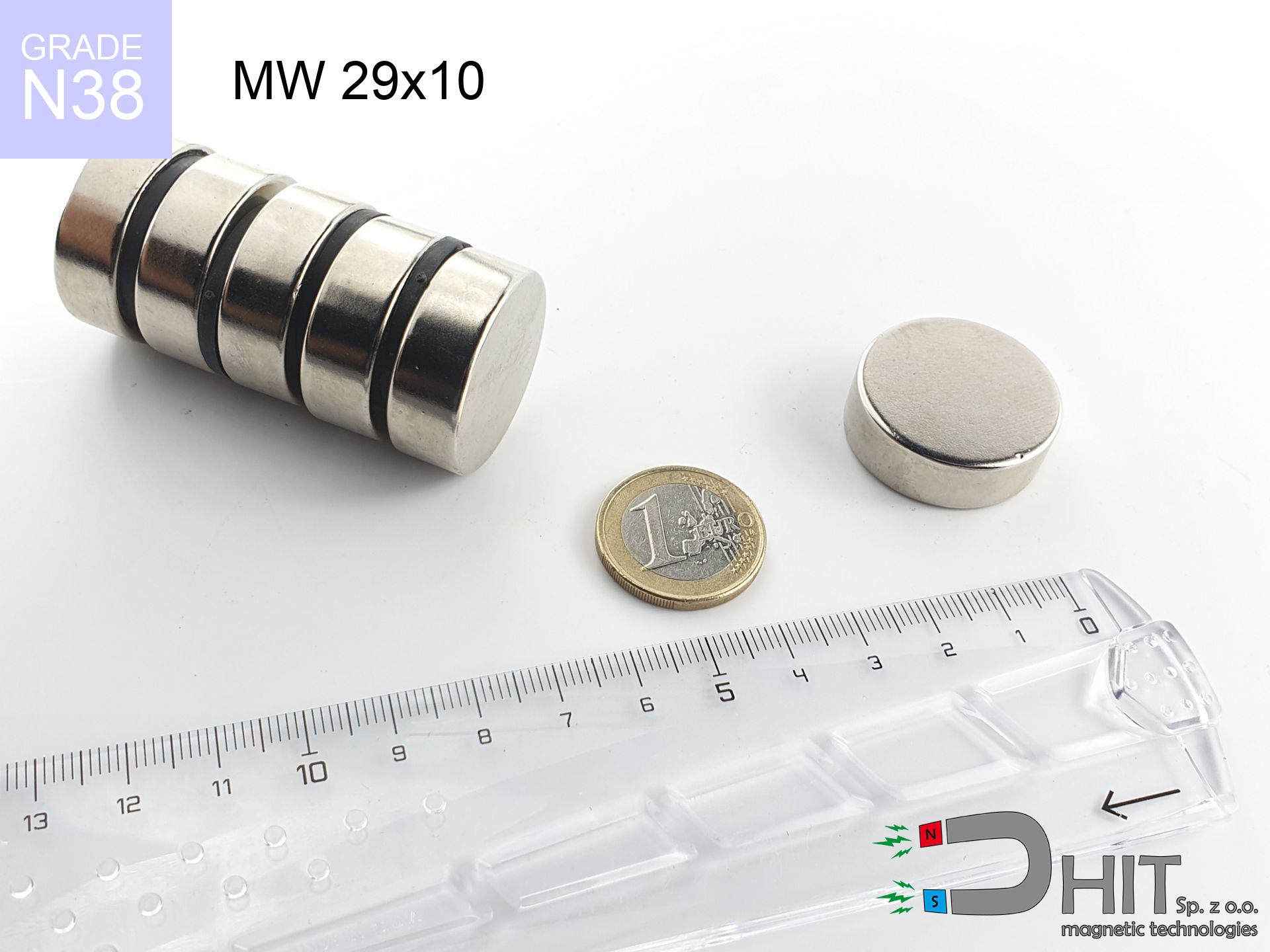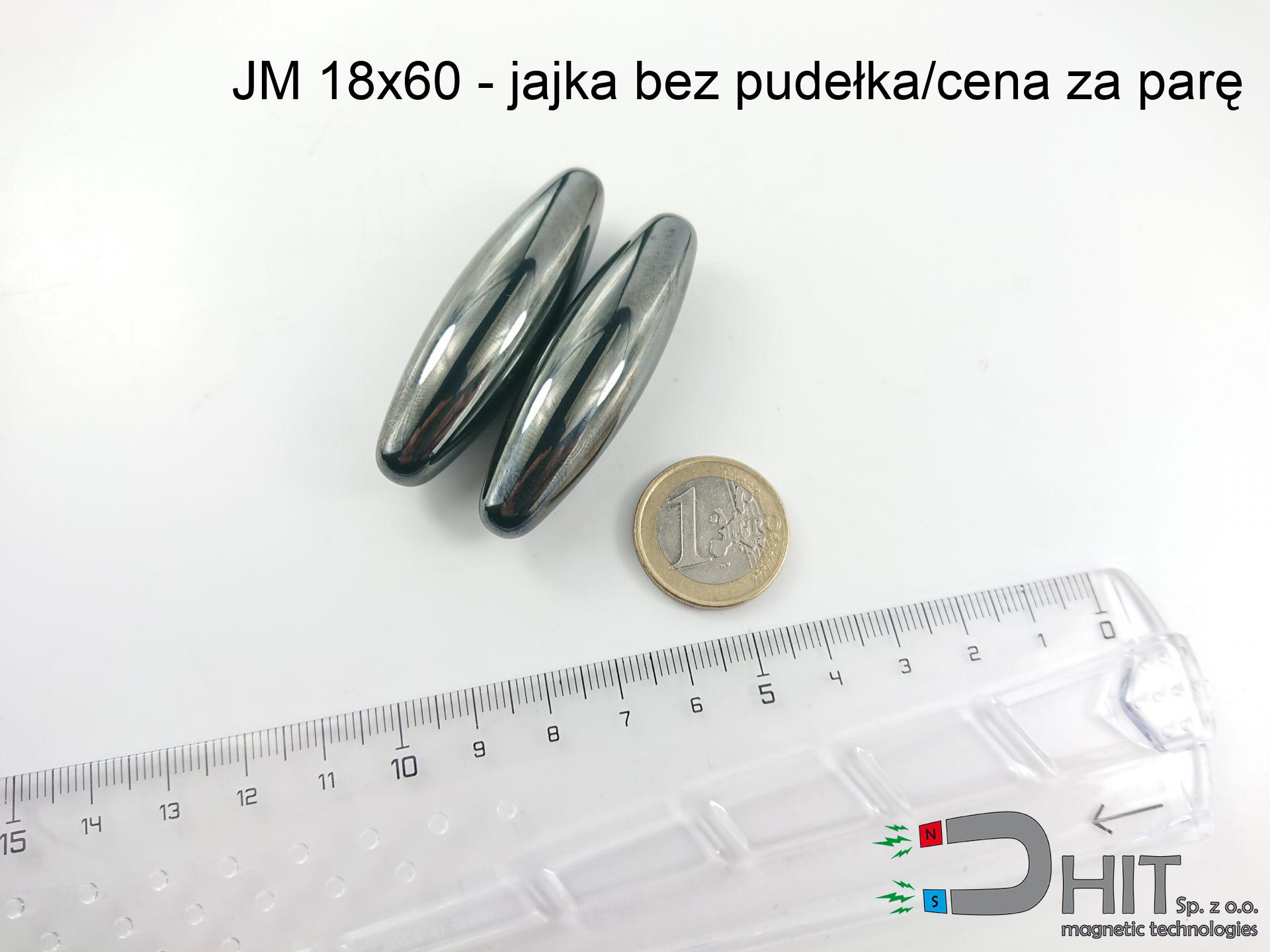SM 18x175 [2xM5] / N42 - magnetic separator
magnetic separator
Catalog no 130272
GTIN/EAN: 5906301812746
Diameter Ø
18 mm [±1 mm]
Height
175 mm [±1 mm]
Weight
0.01 g
Magnetic Flux
~ 5 400 Gauss [±5%]
387.45 ZŁ with VAT / pcs + price for transport
315.00 ZŁ net + 23% VAT / pcs
bulk discounts:
Need more?
Call us
+48 888 99 98 98
or contact us through
form
the contact section.
Specifications along with appearance of a neodymium magnet can be reviewed using our
force calculator.
Order by 14:00 and we’ll ship today!
Detailed specification - SM 18x175 [2xM5] / N42 - magnetic separator
Specification / characteristics - SM 18x175 [2xM5] / N42 - magnetic separator
| properties | values |
|---|---|
| Cat. no. | 130272 |
| GTIN/EAN | 5906301812746 |
| Production/Distribution | Dhit sp. z o.o. |
| Country of origin | Poland / China / Germany |
| Customs code | 85059029 |
| Diameter Ø | 18 mm [±1 mm] |
| Height | 175 mm [±1 mm] |
| Weight | 0.01 g |
| Material Type | Stainless steel AISI 304 / A2 |
| Magnetic Flux | ~ 5 400 Gauss [±5%] |
| Size/Mount Quantity | 2xM5 |
| Polarity | circumferential - 8 poles |
| Casing Tube Thickness | 1 mm |
| Manufacturing Tolerance | ±1 mm |
Magnetic properties of material N42
| properties | values | units |
|---|---|---|
| remenance Br [min. - max.] ? | 12.9-13.2 | kGs |
| remenance Br [min. - max.] ? | 1290-1320 | mT |
| coercivity bHc ? | 10.8-12.0 | kOe |
| coercivity bHc ? | 860-955 | kA/m |
| actual internal force iHc | ≥ 12 | kOe |
| actual internal force iHc | ≥ 955 | kA/m |
| energy density [min. - max.] ? | 40-42 | BH max MGOe |
| energy density [min. - max.] ? | 318-334 | BH max KJ/m |
| max. temperature ? | ≤ 80 | °C |
Physical properties of sintered neodymium magnets Nd2Fe14B at 20°C
| properties | values | units |
|---|---|---|
| Vickers hardness | ≥550 | Hv |
| Density | ≥7.4 | g/cm3 |
| Curie Temperature TC | 312 - 380 | °C |
| Curie Temperature TF | 593 - 716 | °F |
| Specific resistance | 150 | μΩ⋅cm |
| Bending strength | 250 | MPa |
| Compressive strength | 1000~1100 | MPa |
| Thermal expansion parallel (∥) to orientation (M) | (3-4) x 10-6 | °C-1 |
| Thermal expansion perpendicular (⊥) to orientation (M) | -(1-3) x 10-6 | °C-1 |
| Young's modulus | 1.7 x 104 | kg/mm² |
Table 1: Rod construction
SM 18x175 [2xM5] / N42
| Parameter | Value | Description / Unit |
|---|---|---|
| Diameter (Ø) | 18 | mm |
| Total length | 175 | mm (L) |
| Active length | 139 | mm |
| Section count | 6 | modules |
| Dead zone | 36 | mm (2x 18mm starter) |
| Weight (est.) | ~338 | g |
| Active area | 79 | cm² (Area) |
| Housing material | AISI 304 | 1.4301 (Inox) |
| Surface finish | Ra < 0.8 µm | Polished |
| Temp. class | 80°C | Standard (N) |
| Force loss (at max °C) | -12.8% | Reversible loss (physics) |
| Force (calculated) | 3.8 | kg (theor.) |
| Induction (surface) | ~5 400 | Gauss (Max) |
Chart 2: Field profile (6 sections)
Chart 3: Temperature performance
Material specification
| iron (Fe) | 64% – 68% |
| neodymium (Nd) | 29% – 32% |
| boron (B) | 1.1% – 1.2% |
| dysprosium (Dy) | 0.5% – 2.0% |
| coating (Ni-Cu-Ni) | < 0.05% |
Ecology and recycling (GPSR)
| recyclability (EoL) | 100% |
| recycled raw materials | ~10% (pre-cons) |
| carbon footprint | low / zredukowany |
| waste code (EWC) | 16 02 16 |
Check out also deals
Advantages as well as disadvantages of rare earth magnets.
Advantages
- They have constant strength, and over around ten years their attraction force decreases symbolically – ~1% (in testing),
- Neodymium magnets prove to be remarkably resistant to demagnetization caused by magnetic disturbances,
- A magnet with a metallic nickel surface is more attractive,
- Magnets possess impressive magnetic induction on the outer side,
- Due to their durability and thermal resistance, neodymium magnets are capable of operate (depending on the shape) even at high temperatures reaching 230°C or more...
- Thanks to modularity in forming and the capacity to modify to unusual requirements,
- Fundamental importance in modern technologies – they are utilized in data components, electric drive systems, medical equipment, and complex engineering applications.
- Thanks to their power density, small magnets offer high operating force, with minimal size,
Weaknesses
- To avoid cracks under impact, we suggest using special steel holders. Such a solution secures the magnet and simultaneously increases its durability.
- Neodymium magnets lose force when exposed to high temperatures. After reaching 80°C, many of them experience permanent weakening of power (a factor is the shape and dimensions of the magnet). We offer magnets specially adapted to work at temperatures up to 230°C marked [AH], which are extremely resistant to heat
- When exposed to humidity, magnets usually rust. For applications outside, it is recommended to use protective magnets, such as those in rubber or plastics, which secure oxidation and corrosion.
- We suggest a housing - magnetic mechanism, due to difficulties in creating nuts inside the magnet and complex forms.
- Health risk related to microscopic parts of magnets are risky, when accidentally swallowed, which becomes key in the aspect of protecting the youngest. Furthermore, tiny parts of these products can disrupt the diagnostic process medical when they are in the body.
- Higher cost of purchase is one of the disadvantages compared to ceramic magnets, especially in budget applications
Holding force characteristics
Highest magnetic holding force – what contributes to it?
- using a base made of mild steel, acting as a magnetic yoke
- with a cross-section no less than 10 mm
- with a plane cleaned and smooth
- without the slightest insulating layer between the magnet and steel
- for force applied at a right angle (pull-off, not shear)
- in temp. approx. 20°C
Lifting capacity in practice – influencing factors
- Clearance – existence of any layer (paint, tape, gap) acts as an insulator, which reduces capacity steeply (even by 50% at 0.5 mm).
- Pull-off angle – remember that the magnet holds strongest perpendicularly. Under sliding down, the capacity drops drastically, often to levels of 20-30% of the nominal value.
- Steel thickness – too thin steel causes magnetic saturation, causing part of the flux to be wasted to the other side.
- Steel type – low-carbon steel gives the best results. Alloy admixtures reduce magnetic permeability and holding force.
- Surface condition – smooth surfaces ensure maximum contact, which improves force. Uneven metal reduce efficiency.
- Temperature – temperature increase results in weakening of induction. It is worth remembering the thermal limit for a given model.
Holding force was measured on a smooth steel plate of 20 mm thickness, when the force acted perpendicularly, whereas under parallel forces the lifting capacity is smaller. In addition, even a slight gap between the magnet and the plate reduces the holding force.
Safety rules for work with neodymium magnets
Conscious usage
Use magnets consciously. Their powerful strength can surprise even experienced users. Be vigilant and respect their force.
Serious injuries
Watch your fingers. Two powerful magnets will snap together immediately with a force of massive weight, destroying anything in their path. Exercise extreme caution!
Combustion hazard
Fire warning: Neodymium dust is highly flammable. Do not process magnets in home conditions as this may cause fire.
No play value
Only for adults. Tiny parts pose a choking risk, causing severe trauma. Store away from children and animals.
Beware of splinters
Despite metallic appearance, the material is brittle and not impact-resistant. Avoid impacts, as the magnet may crumble into hazardous fragments.
Keep away from computers
Do not bring magnets close to a wallet, computer, or screen. The magnetism can destroy these devices and wipe information from cards.
Demagnetization risk
Regular neodymium magnets (grade N) lose magnetization when the temperature exceeds 80°C. Damage is permanent.
ICD Warning
Life threat: Strong magnets can deactivate heart devices and defibrillators. Stay away if you have medical devices.
Skin irritation risks
Certain individuals have a hypersensitivity to nickel, which is the typical protective layer for NdFeB magnets. Prolonged contact can result in an allergic reaction. We recommend use protective gloves.
Threat to navigation
GPS units and mobile phones are extremely susceptible to magnetism. Close proximity with a powerful NdFeB magnet can permanently damage the internal compass in your phone.

![Separation magnetic rod SM 18x175 [2xM5] / N42 Separation magnetic rod SM 18x175 [2xM5] / N42](https://cdn3.dhit.pl/graphics/banners/magnet.webp)
![SM 18x175 [2xM5] / N42 - magnetic separator](https://cdn3.dhit.pl/graphics/products/sm-18x175-2xm5-rov.jpg)



![UMGZ 16x13x5 [M4] GZ / N38 - magnetic holder external thread UMGZ 16x13x5 [M4] GZ / N38 - magnetic holder external thread](https://cdn3.dhit.pl/graphics/products/um-16x13x5-m4-gz-cor.jpg)

